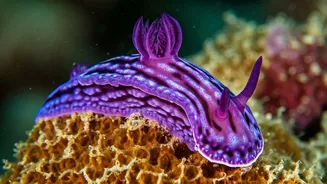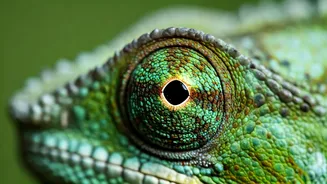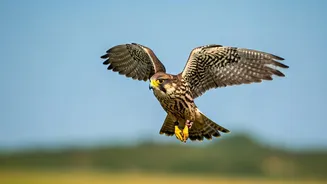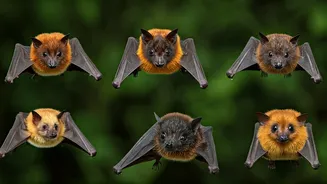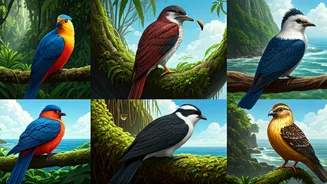Purple Sea Creatures
The ocean holds many surprises, and among them are several vibrantly purple sea creatures. The first example is the purple sea slug, a gastropod known
for its striking coloration. It often features contrasting colors and patterns, like bright yellow or orange. Another is the purple sea star, whose hue ranges from pale lavender to deep violet. These starfish often have intriguing textures. Then, there's the purple jellyfish, whose color can be quite dramatic. These transparent creatures, with their bell-shaped bodies and trailing tentacles, add an element of mystery to the marine environment. These creatures exhibit their striking coloration for reasons like camouflage or to warn off predators.
Birds with Purple Plumage
Birds, renowned for their colorful feathers, also boast members adorned in shades of purple. The purple-throated carib, a hummingbird species, is an excellent illustration, with iridescent purple feathers around its throat. These feathers shimmer in various hues depending on the light, adding a touch of elegance. Another example is the violet-backed starling, native to Africa. These birds show a remarkable combination of metallic purple, blue, and green. The combination creates a dazzling visual effect. Such colorations play a vital role in attracting mates and signaling their health and fitness. These beautiful birds make purple a stunning spectacle in the skies.
Purple Mammalian Marvels
Mammals, though often associated with earthy tones, can also exhibit purple hues. One such example is the purple-faced langur, a primate species found in Sri Lanka. The langur derives its name from the distinctive purple coloration on its face. The color becomes more vibrant in mature males. This unique feature helps them stand out and assert dominance within their social groups. The purple-faced langur, with its striking appearance, underscores the diversity of coloration across the animal kingdom. These mammals are a unique addition to the list, showing how purple manifests even in unexpected species.
Amphibian’s Purple Wonders
Amphibians, known for their vibrant colors and sometimes toxic appearances, can also display shades of purple. A good illustration is some species of poison dart frogs, a group known for their bright colors. Certain varieties exhibit purplish hues, adding to their already impressive and sometimes intimidating coloration. These colors serve as a warning sign, alerting predators to their toxicity. Another interesting example is some species of salamanders, which may have purple or lavender patterns as part of their markings. These amphibians show how the color purple can blend into their environments or serve as a strong visual warning.
Insects and Purple Hues
The world of insects is full of surprises, including species that display purple coloring. Several types of butterflies, for example, have wings with iridescent purple patterns. The shimmering hues change depending on the light, and these butterflies use them to attract mates and blend into their surroundings. Certain beetles also exhibit purple tones, often as part of their metallic exoskeletons. These colours can serve functions such as camouflage. These insects' presence on the list shows how diverse purple's presence can be in the animal kingdom, particularly amongst small creatures.
